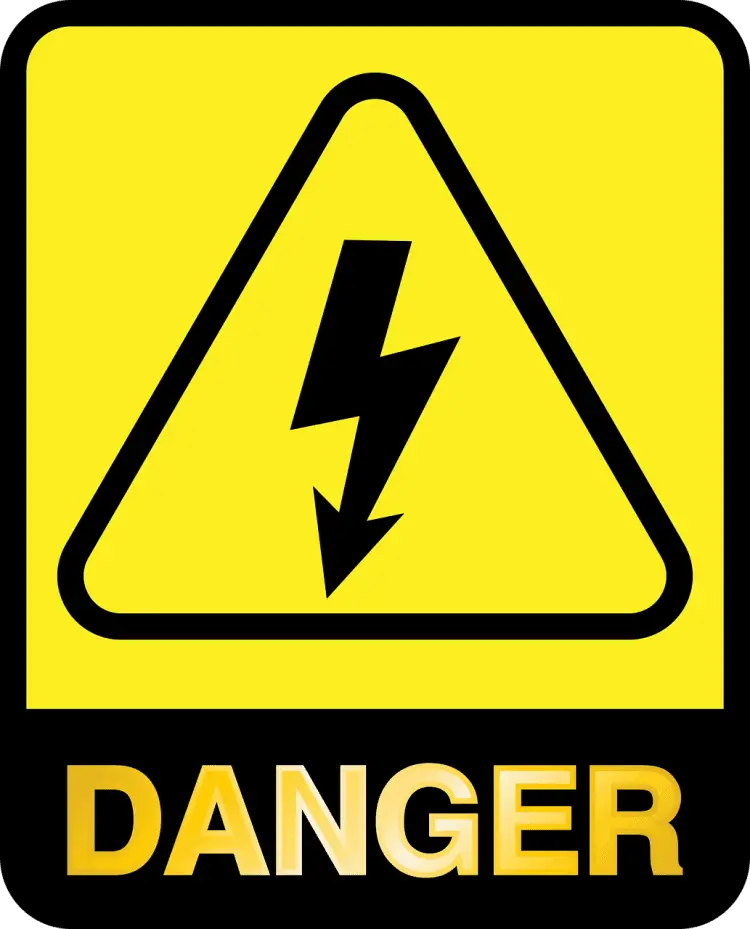This post contains affiliate links to products, services, or education. We may receive a commission for purchases made through links.
Welding may not seem like a highly dangerous profession, but according to the Occupational Safety & Health Administrations (OSHA) data, on average, nearly 562,000 employees are at risk of harm from the chemical and physical aspects of welding each year. While proper training and personal protective equipment (PPE) can help curtail injuries, there is always the possibility of injury. When working with high voltage and high heat materials, there is little room for error.
What are the common welding injuries? Welding is hazardous and has been linked to the following types of injuries and ailments:
- Respiratory injuries from toxic fume inhalation
- Vision Problems
- Eye Injuries
- Electrocution
- Burns
- UV Exposure
- Radiation Exposure
- Skin Injuries
- Hearing Loss
As you can see, the number of injuries a welder risks sustaining during an average workday is quite high for the profession. If you notice, the injuries include most of the major body systems and are not limited to simple injuries. Many of the injuries can be life-altering. In this article, you are going to learn about the most common injuries faced by welding professionals.
Respiratory Injuries from Toxic Fume Inhalation

Typically, when you think of welding, you think of sparks, electricity, and high heat. However, one of the more dangerous components of welding is the release of toxic fumes. According to the article Welding Fume Hazards, in Safety + Health, the act of welding releases different metals into the air, which are easily breathed in by the welder if proper PPE is not used.
The metals commonly released during welding are:
- Aluminum
- Arsenic
- Beryllium
- Lead
- Manganese
Along with the metals that are released into the air, there are also harmful gases. The gases commonly associated with welding are:
- Argon
- Nitrogen
- Carbon Dioxide
- Carbon Monoxide
- Hydrogen Fluoride
The list of harmful metals and fumes is quite concerning. So, you may be wondering what the exact repercussions of breathing these materials are? If you breathe them in for a split second, you will likely not experience anything more than minimal and fleeting discomfort. However, if you are exposed to them for an extended period, you could be posing a serious risk to your health.
What Happens When You Are Exposed to Fumes During Welding?
When welding is your profession, you can expect to be around the fumes for several hours a day for many years. If you were to breathe these fumes in for a long time, you would likely suffer dire health consequences that may or may not be reversible. The study Welding Fumes, A Risk Factor for Lung Diseases, explores the types of lung damage that can occur from overexposure to welding fumes from both gases and metals.
The respiratory issues seen most with overexposure are:
- lung disease
- Metal Fume Fever
- Infectious Pneumonia
- Chronic Bronchitis
- asthma
- Chronic Obstructive Pulmonary Disease (COPD)
- Interstitial Lung Disease
- Pulmonary Fibrosis
- lung cancer
Each of these diseases directly impacts the lungs, making life after exposure challenging. Many of the respiratory-related illnesses are long-term and not always easily treated. There are testing measures put in place to monitor welders for a buildup of specific metals in their bodies, but they are not always accurate and may not be able to measure the extreme effect of the long-term exposure.
Preventing Over-Exposure to Fumes
After seeing the litany of health issues associated with overexposure to welding fumes, you may be wondering how the exposure can be prevented. There are specific things you can do to limit the exposure you have to the fumes, such as:
- Properly clean the welding surface, but use the correct cleaning products. This eliminates the chance of buildup that will be burnt off as toxic fumes.
- Stay upwind of the welding fumes but do not rely on an outdoor environment to provide full protection from the fumes. While you may not be smelling the fumes, they are still there and being breathed into your lungs.
- Use ventilation systems inside and make sure the exhaust is not vented toward any other worker or workspace.
- Wear a face mask/respirator to protect yourself from the fumes. Check out our recommended respirators here.
To learn more about respiratory gear and hazards, check out our article about if a respirator is a welding necessity.
Vision and Eye Injuries
Another severe injury risk faced by welders involves their eyes. The eyes are one of the most sensitive organs in the body and can be easily injured when welding. One of the most common eye injuries is called arc eye or welder’s eye. According to the article, All About Welder’s Flash or Arc Eye, eye injuries can occur very quickly and leave a welder with a lasting injury.
Arc Eye
As you know, arc welding is a type of welding but is not the sole cause of arc eye. Arc eye is what can be referred to as a flash burn. It happens very quickly and can cause painful damage to the eye. According to The US Bureau of Labor Statistics, nearly 5.1% of all welding eye injuries are a result of arc eye. A flash burn causes inflammation of the cornea and is like a sunburn on the eye. Fortunately, this is a burn that can repair itself, given a few days and treatment from a physician.
If a welder has a flash burn on their eye, they will likely experience the following symptoms:
- pain in the eye
- bloodshot eyes
- light sensitivity
- watery eyes
- blurred vision
- the feeling of something in your eye
This injury will likely repair itself in a few days, and there will be no lasting effects and can be treated quite easily with drops, eye coverings, and (sometimes) antibiotics to prevent infection. Although this is not a lasting vision issue, proper precautions must be taken to avoid future injuries from occurring.
Flying Debris
Another common cause of eye injury to welders involves flying debris. When welding, it is common for particles of metal and other debris to fly off the table as well as the objects you are welding. Typically, the objects will be particles of metal that are like dust or sand. It is an instinct to rub your eye when something is irritating it, but if there is a metal particle in your eye, you are likely to scratch the cornea.
Most of the time, this is a minor injury that heals on its own. However, there are times the scratch can go deeper than the cornea. If this happens, the individual’s vision will probably be altered for the rest of their life.
Prevent Eye Injuries
The best way to prevent eye injuries is to make sure the proper PPE is always worn. Do not rely on sunglasses to protect your eyes from the ultraviolet light emitted by the welding machine. It is essential to use appropriately rated PPE to protect your eyes from both the light as well as flying debris (like a welding helmet! Check out our recommended welding helmets here).
If you think you have gotten a piece of metal or other debris in your eye, be sure to rinse it with water or saline to release the debris. If this does not work, you need to see a professional to have the situation appropriately assessed.
For more information, check out our article about eye injuries while welding.
Is Electrocution a Risk?

Whenever you are working with any piece of high voltage equipment, electrocution is a risk that you must deal with. While the risk of being electrocuted when welding is relatively low, it is still something that needs to be considered.
Causes of Electrocution
While electrocution by welding is not high on the risk list, some factors make this a much more real possibility. The article, Electric Shock from Electric Welders, by Mike Holt, shares the following things that increase the risk of electrocution:
- Using the welder in damp conditions
- Improperly grounded welding machine (check out how to properly ground your welding machine here)
- Improper use of the machine
- The amount of insulation from the electrode to the piece being welded
- The amount of physical contact the welder has with the piece
Using the welding machine in damp conditions: It is essential to remember a welding machine is working on a rather high voltage level. Because of this, you need to be very aware of the conditions you are choosing to weld in. If you are welding in a damp environment without the proper grounding or protective equipment, you run the risk of electrocution.
Improperly grounded welding machine: Whenever you weld, you need to make sure the machine is properly grounded. The purpose of grounding a welder is to provide a location for the electricity to discharge to (the ground). If a machine is not grounded correctly, the electrical current will use the welder as a human ground. If this occurs, serious injury or death is possible. When grounding a welding machine, check the individual specifications for your machine. If you are outside, the process of grounding may be a bit more complicated, but it is an essential step to ensure you are safe.
Read more about grounding your welding machine in our article here.
Improper use of the machine: Just like any machine, if you do not use it properly, there are consequences you may face. In the case of a welding machine, those consequences could likely be electrocution. Read the owner’s manual, take a class, or find a mentor to help you use the machine properly to avoid the risk of electrocution.
The amount of insulation from the electrode to the piece being welded: If the electrode is not insulated correctly, it is likely that an electrical charge will be emitted and could cause the welder to be electrocuted. Therefore, you need to check your machine and all the parts frequently to ensure proper insulation is still present.
The amount of physical contact the welder has with the piece: There are going to be situations where welders are forced to be in very confined spaces to work on the piece being welded. When this happens, the risk of electrocution rises dramatically. The risk is not increasing because of the job, but because of the space where the welder is being forced to work. In a tight space, the risk of the welder contacting the machine and piece being welded at the same time is much higher than if they were in a more spacious environment.
Types of Electrocution that Can Occur
Believe it or not, two different types of electrocution can occur when you are welding. According to the article, The Electrically Shocking Reality of Welding: Causes and Consequences, each of the types has different consequences and varies in severity.
The two types of electrocution that can occur when welding are:
- Primary electrical shock: This is one of the most lethal forms of shock a welder can experience because it involves a much higher voltage than secondary electrical shocks. This occurs when you accidentally touch a component inside the welding machine while touching the grounded metal at the same time, all while the machine is turned on. This is something that can happen very quickly and can be extremely devastating.
- Secondary electrical shock: This is known as one of the more common forms of electrocution a welder may experience. This will typically give you a shock that you remember but can recover from quite quickly and is typically not fatal.
Results of Electric Shock
If you have ever experienced a brief electric shock from a metal fence or an outlet, you know the tingling feeling that goes into your fingers, hand, and sometimes arm. If you are shocked with a welding machine, you may experience this or some of these other feelings:
- Burns
- Pain in the chest and abdomen
- Nervous system impairment
- Paralysis
- Heart attack
Burns: When you experience a shock from a welding machine, you may experience burns on the location that was in contact with the machine or components of the machine. These burns can range from minor to severe. While most burns will occur on the outside of your body, there is the potential for internal burning to occur if the shock is strong enough. If an individual experiences a shock that involves internal burns, there is a strong likelihood that their life will be endangered.
Pain in the chest and abdomen: Often, if someone is shocked with an extremely high voltage, they will experience pain in their chest or abdomen. This can be an indicator there is an internal burn that cannot be seen but is extremely dangerous. When you think of the chest and abdominal pain, this unlike anything you may have previously experienced. It is likely to be excruciating and without relief.
Nervous System impairment: When an electrical charge goes through your body, depending on the strength of the charge, you may experience impairment in your nervous system. Sometimes this is brief, while at other times, it may be longer-lasting.
Paralysis: This can occur in varying degrees that can be temporary or lifelong, depending on the severity of the shock.
Heart Attack: If the shock that is received is significant, it can cause a heart attack to occur because the heart contracts and is not able to pump blood properly.
While each of these results varies in severity and length, they are all incredibly unpleasant and should be avoided at all costs. Accidents do happen when you are working with welding machines, but they do not have to be severe if you follow the proper precautions.
Prevent Electrocution When Welding
The best way to prevent electrocution from occurring when welding is to frequently check your machine for necessary repairs as well as proper setup. You also want to make sure you are entirely focused when using a welding machine or even being around a welding machine. This focus will help ensure that you do not accidentally touch a live part of the machine.
Good, solid PPE is one of the keys to protecting yourself from electric shock. See our list of all recommended gear here. Thank us later…
Welding Burns
Another area of the body that is often subject to injury while welding is the skin. It is essential to wear all the correct safety equipment to reduce the risk of burns, but accidents can and do happen. Burns can affect any portion of the body that is not covered in protective gear. For this reason, it is vital to use proper safety gear to ensure you are fully protected.
A welding helmet is recommended as an added layer of protection for your face and ears. While a helmet may seem cumbersome and uncomfortable, it is a much better option that facial burns.
Treating Welding Burns
According to the article Burn Free by Susan Woods, any time you receive a burn when welding, it is a good idea to seek medical help. It may not be necessary for a mere spark, but if the burn has pain that seems to worsen, it would be wise to have it checked out. Many welders will try to work through the pain, but this can have adverse effects and can cause more trouble than is necessary.
If the burn is severe, you may need an antibiotic cream to ensure it does not become infected. She also explains that contact burns need to be cooled quickly to help avoid tissue damage. If the burn experienced is severe, medical attention should be sought right away to help avoid infection and unnecessary scarring.
Radiation Exposure and Skin
Most of the time, welders are well covered when doing their job, but some choose not to use all the recommended protective gear, which leads to unnecessary exposure to radiation. Exposure to radiation in even small doses can be dangerous. After all, it is used to kill cancer cells, and people are offered protection against it when getting x-rays of any type. The constant exposure to radiation when welding is sure to be detrimental to one’s health.
The Canadian Center for Occupational Health and Safety (CCOHS) explains the types of radiation welders are exposed to. These types of radiation include:
- UV
- Visible
- Infrared
Typically, visible, and infrared radiation does not impact the skin, but UV rays can be hazardous over time.
Ultraviolet Light
You typically hear about ultraviolet light when speaking about the sun or a tanning bed. You have likely seen labels on many beauty products that claim UV protection. It is crucial to protect your skin from ultraviolet light as much as possible because of the lasting damage that can occur with lengthy exposure.
The ultraviolet light from a welding machine is comparable to that you would receive from overexposure to the sun. When welding, you cannot rely on sunscreen to protect you, but you can find the proper PPE to do the job. The ultimate consequence of overexposure to UV light is the heightened risk of developing skin cancer.
Prevent Radiation Exposure
When welding, it is impossible to avoid radiation, but that does not mean you have to allow it to reach your skin or eyes. To ensure radiation does not impact your health in the future, you must take the proper safety precautions when welding. Make sure your body is fully covered when working to ensure you are not haphazardly exposing yourself to ultraviolet rays.
It may seem daunting to put all the gear on, but it is necessary to provide the proper protection to your body to prevent overexposure to UV radiation.
Hearing Loss Affects Welders

Believe it or not, welders have a significant risk of hearing loss because of their profession. Welding is not the loudest of jobs, but there are a couple of factors that can impact hearing and expedite hearing loss. According to Judy Huch in the article, Welding fumes and Hearing Loss: Here’s the Connection, there are two reasons hearing loss is prevalent among welders:
- Drop-Weld Ear Injury
- Over Exposure to Fumes
Drop-Weld Hearing Injury
Drop-weld hearing injuries occur when a piece of hot metal falls into the ear. If the metal makes it down into the ear canal, it can cause significant damage that requires invasive surgery to repair it. Unfortunately, this can also leave the individual affected with a limited ability to hear from the ear.
Over Exposure to Fumes
Most people know that fumes can cause significant injury to the respiratory system over time, but they do not think about how they may impact other body systems. There has been evidence that suggests the prolonged inhalation of these fumes can lead to a disruption in the brain nerve cells as well as other body organs. This disruption can be linked to a loss in hearing as well.
Prevent Hearing Loss
While you cannot eliminate the risk of hearing loss, you can certainly act proactively to prevent it from occurring rapidly. When welding, it is vital that your ears are always protected. Many welders choose to wear earplugs or earmuff type noise-reducing headphones. Both options will offer protection to your delicate ears.

In the case of fume inhalation, the best method of protection is to use a properly rated respirator or, at the very least, a protective face mask that will lower the rate of fume inhalation that occurs on the job.
Is Welding a Dangerous Job?
After reading about all the potential injuries suffered by welders, you may be wondering if welding is indeed a dangerous job. In short, yes, it can be. Welding can be a dangerous job, but many factors go into that description.
Like any job, some risks are faced every day—many of the risks associated with welding fall directly on the action of the welder.
When an individual decides they want to be a welder as a profession, they are assuming a lot of risks that can be lowered simply by their actions and choices. If an individual makes it a point to use the proper PPE always and maintains their welding machine and components correctly, the risk they face is relatively low. However, if an individual prefers to carry out welding jobs in a free-spirited and lightly protected manner, their level of risk is going to be increased significantly.
You are always going to be using high voltage equipment, which carries with it the risk of electrocution, and potential burns, but knowing this should allow you to prepare for the dangers accordingly.
Understanding the risks that you face while welding is the first step toward preventing bodily injury, and carefully handling and maintaining the machinery you use only furthers your safety.
Final Thoughts
Welding is a prevalent job, and it is a job that requires a great deal of caution, knowledge, and common sense. With the proper training and follow-through, a welder’s job is not likely to cause significant physical harm or death. However, if an individual is not professionally trained, is reckless, and lacks common sense, they are much more likely to suffer serious injuries or even death.
Although many injuries can occur when welding, there is PPE that has been created and tested specifically for welders to prevent unnecessary injuries. If this equipment is used faithfully and the machines being used are adequately maintained, the risk of injury will significantly decrease for the welder.
If you do happen to get injured when welding, you must seek the attention of a medical professional right away to ensure the injury is treated correctly. Many welding injuries run the risk of a significant infection that can be debilitating if left untreated. With common sense and proper preparedness, injuries do not have to happen to you.

